Midday on a late autumn Friday, I arrive at a street corner in South Central just east of the USC campus and the 110. Although I took the metro (Green line, to Blue line, to Expo line, and walked) the freeway remains the most distinctive physical indicator in the neighborhood. A landmark lined with many encampments of the nearly seventy thousand unhoused residents of the city, it is raised above the train lines, and cuts north into downtown and south along the spine of Los Angeles towards San Pedro, the busiest container port in the Western Hemisphere. So much literary and cinematic mythologizing of LA has been crafted around cars, and design of the city’s neighborhoods and infrastructure has been contingent on their movements. Walking casually past onramps and offramps, mostly unmarked for pedestrian crossing, there isn’t much to direct me aside from the little pin I’ve marked in a map on my phone.
I’m craving something specific. At this point it’s only a month-old memory, fresh off my move from Philadelphia to Los Angeles at the end of August. There’s an Ital spot down on Baltimore Avenue in West Philly, Hibiscus Cafe, with an impossibly good jerk seitan: allspice, garlic, soy, ginger, cinnamon, scotch bonnet peppers with a real spicy kick, saturated into fluffy brown rice speckled with hearty black beans, dense with collard greens, and served in a shallow silver tin. Rasta food, vital as in vitality. The closest I can find with a cursory search is a “vegan soul food” spot. Based on images that I find online, “Jackfruit Cafe” appears to be a brick-and-mortar with casual cafe seating next to a large window. Partly it’s the literal food that I crave, the tastes and smells. Partly it’s the tiny storefront in its bustling urban context that I’m missing, with a wide view across the intersection to the food co-op just across the street, zine distribution set up outside a corner bookstore, gatherings of people standing outside of long standing organizing spaces for the free exchange of goods and services, gas stations with donut shops next door, and deli counter bodegas dotting up and down Baltimore Avenue.
Midday on a summer Friday four months previously, I stood under the fluorescent yellow light of a warehouse building lobby in Mantua, West Philly that had been under construction since I’d first moved to the neighborhood eleven months prior. Freshly painted a dark navy, the building was almost imperceptible at night aside from enormous white block letters that read FAIR FOODS. The neighborhood is hard hit by food apartheid, a term coined by Bronx-based farmer and food justice advocate Karen Washington to better describe what the USDA terms a “food desert.” The slogan “fair foods” seems to indicate food equity work inside the building, possibly a distribution center or a market for fresh produce, in a neighborhood where the closest grocery store is two bus lines away. Fast food chains and corner stores selling prepackaged food maintain their grip as a primary food supplier in Mantua, more than a decade after reports had indicated the need for a grocery store.
The lobby was stark. Grey linoleum tiles lined by dark blue baseboards set in a featureless room, with small touchscreens mounted to the whitewashed walls, numbered 1 through 6. Illuminated with a series of fast-food restaurant names and glossy, overdone photos, the screens glowed white in an already pale room. The space behind the counter was entirely unoccupied, and empty stainless steel countertops receded alongside a short wall of square pale grey lockers numbered in blocky black text. Contactless, said my pandemic brain. Inhuman, austere, cold, said my actual brain. I would pass the building multiple times daily by bike throughout its construction. Cars remained parked and double-parked outside during the day, and late into the night. Ostensibly, drivers used their cellphones to access customer orders through the touchscreens, then picked up a paper bag from one of the numbered grey lockers. All of these interactions were mediated entirely through screens with no human interaction, as the lobby desk was frequently left unattended during the early months of the ghost kitchen’s opening. This phenomenon was possibly most unnerving in the street, where cars stacked up end to end, and side to side, each person in the driver’s seat with their face aglow from a tiny phone screen, car idling. The quiet acquiescence was sinister.
Back in autumn LA, I walk past warehouse-type buildings with impenetrable facades, then a grouping of porta potties policed by a lackluster attendant. It’s unclear to me what criteria are used to determine which individuals are suitable or unsuitable for admittance. I consider briefly that this is a city well-acquainted with the fact that addiction and mental illness are frequently coupled with the precarity of being unhoused. That this policing is likely precluding access for houseless people who, more than most, need access to this resource: a public bathroom. The attendant keeps watch in a somewhat lackadaisical manner, perched on a barstool-height plastic folding chair just inside a roll-up garage door entryway. Directly across the street, tents and cardboard walls, various personal items, shopping carts filled with necessities including clothes and additional layers of warmth, press up against the side of a monochrome building with no windows. A driveway on its west face stretches back further than I can see from my vantage, and I go on walking a full block and a half further east past this location without pause, certain that I haven’t found what I’m looking for.
Circling back, beholden as I am to the phone in my hand and the pin on my little map, I arrive back at the long asphalt driveway and a semicircular paved patio of grey-washed stones. If anything, grey-washed stone should have read as an indicator. Grey-washed wood, grey-washed walls, grey-washed patio paving; these are recognizable aesthetic choices popularized among “flippers,” who buy properties and transform them into student housing, or tech companies who buy property in “marginal” or “undervalued” parts of the city to more cheaply start up their ventures. A huge screen with a credit card reader attached is posted up front. Unconvinced by this digital replacement for human interaction, I keep walking down the drive until I’m shouted at by an attendant, who leans out the window, “If you want to order something, you have to submit it through the app! First!” Chastised, I walk back with one eyebrow arching skyward. “Then you can pick it up,” he gestures vaguely down the driveway.
Closer, I see that the low-slung building is a horizontal stack of shipping container kitchens, with tan facades and only partly-constructed doors and windows. Newly equipped with the explanation that everything here is for delivery or pickup only, it dawns on me that this is just another ghost kitchen. Mantua’s Fair Foods building was impenetrable. Its kitchens and cooks were completely invisible to me on the street or in the building lobby, hidden upstairs in “a series of hallways lined with 30 small rooms, each housing a restaurant kitchen.” South LA’s ghost kitchens are arrayed such that, when I traverse down the narrow access sidewalk on foot, I am a fair bit closer to the kitchens than a customer in the designated drive aisle is designed to be. What’s odd about my promenade is my shared vantage with the cook in their workspace. I’m intimately pressed against their effectively open kitchens, catching glimpses into a consistent layout of stainless steel countertop center island, southeast corner sink, and refrigerators lining the southwest wall. Each houses individual cooks, individual food operations, individual restaurants, tiny identities and brands packaged into bite-sized representations for the screen on a delivery app, with humans still contained inside.
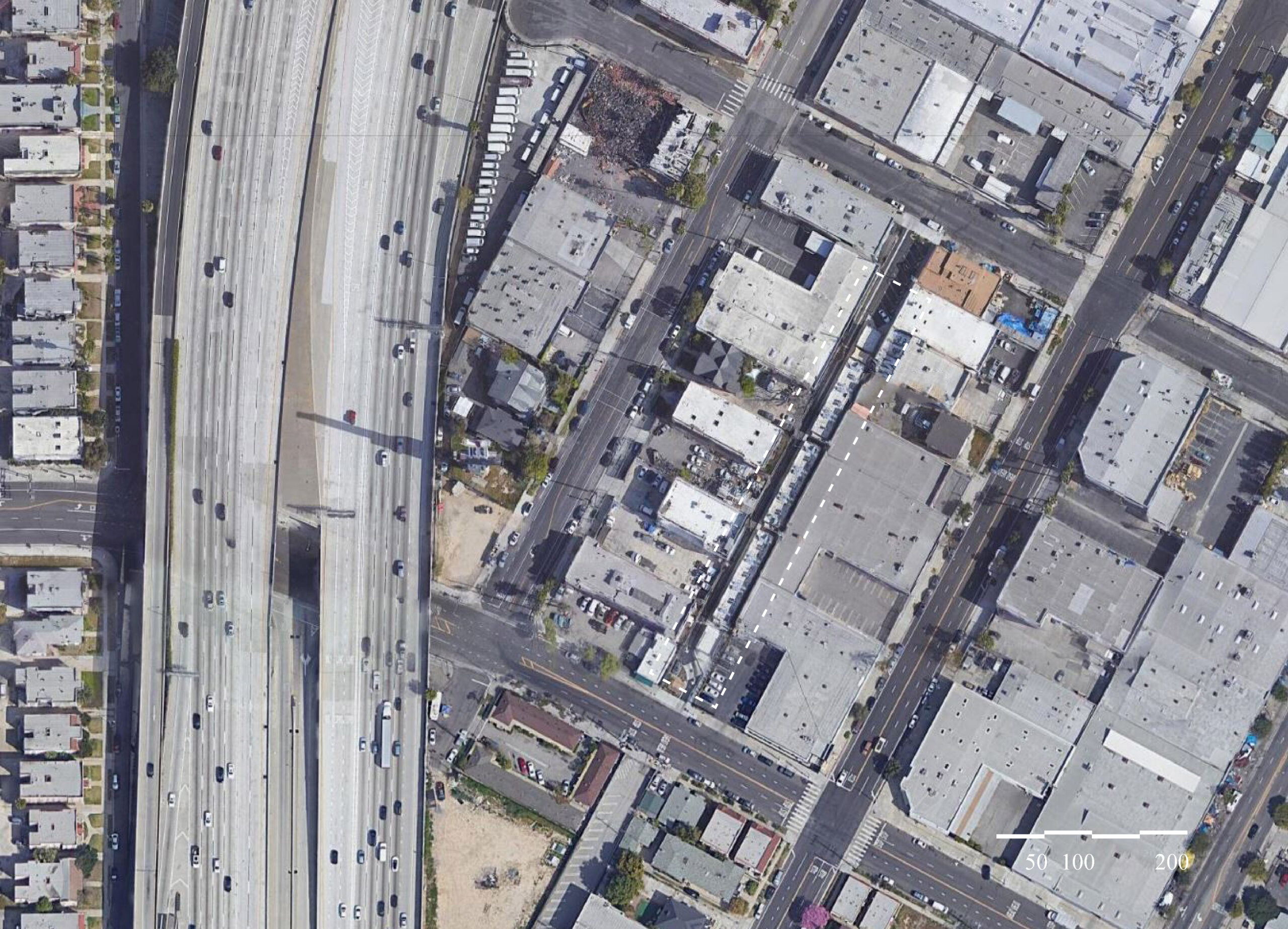

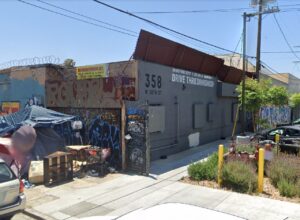
Consumer reliance on food delivery apps was a growing trend prior to the pandemic. Those who could afford to order groceries and pre-prepared meals during lockdown exacerbated this dependence on restaurant cooks and delivery workers. In late March of 2020, research on the “food ordering and delivery practices” of Grubhub, Seamless, Doordash, Caviar, UberEats, and “their policies during coronavirus” revealed that Grubhub and Seamless, owned and operated by the same corporation, provided no sick leave or hygienic equipment for deliverers, and although they deferred commission fees for restaurants, the restaurants would still owe those payments back. Postmates provided sick leave, but no hygienic equipment. Both Doordash and Caviar provided sick leave for delivery workers, as well as hand sanitizer and gloves, and reduced commission for some restaurants. UberEats had waived fees up to 100k for restaurants, rather than merely deferring payments, and was providing for their workers. This information was circulated and continually updated on Instagram and Twitter during the early wave of the pandemic, accompanied by a reminder to tip all food service workers at least 30%. The precarity of underpaid food service workers in the pandemic underscores how this work is invisibilized by the design of the contemporary city, where warehouses and transit centers that supply restaurants, supermarkets, and various food establishments are separated from and largely invisible to consumers themselves.
When it opened in June 2011, the Philadelphia wholesale produce market was the largest refrigerated building in the world, and it continues to provide the majority of produce to groceries and restaurants citywide. Like Hunts Point in New York, or the Port of San Pedro comprising the neighboring Los Angeles and Long Beach ports, despite its vast scale, its distance from the city proper makes it invisible to the day-to-day lives of most residents. As produce runners for West Philly Food Not Bombs, we would walk the length of the refrigerated building interior after circling the exterior by car, unlocking our designated cart secured by bike lock, and traversing the building end to end, visiting each individual produce market to find leftover or unfit-for-sale fruits and vegetables. If you don’t work or do business there, it’s difficult to fathom the scale. In Los Angeles, the port of San Pedro comprises 7,500 acres of land and water along 43 miles of waterfront, and handles more containers per ship than any other port complex in the world. The magnitude of this logistical lift is reflected in the density of Los Angeles, but for the average worker or consumer, the location of these refrigerated warehouses, or delivery truck parking lots, or wholesale suppliers, are physically distanced from the everyday space of the city. There is a pragmatism to the way that the back-of-house service space of a commercial kitchen, or the logistical infrastructure upholding the functioning of the contemporary city, is separated from the space of consumption. But the design of urban space today increasingly separates producers from consumers.
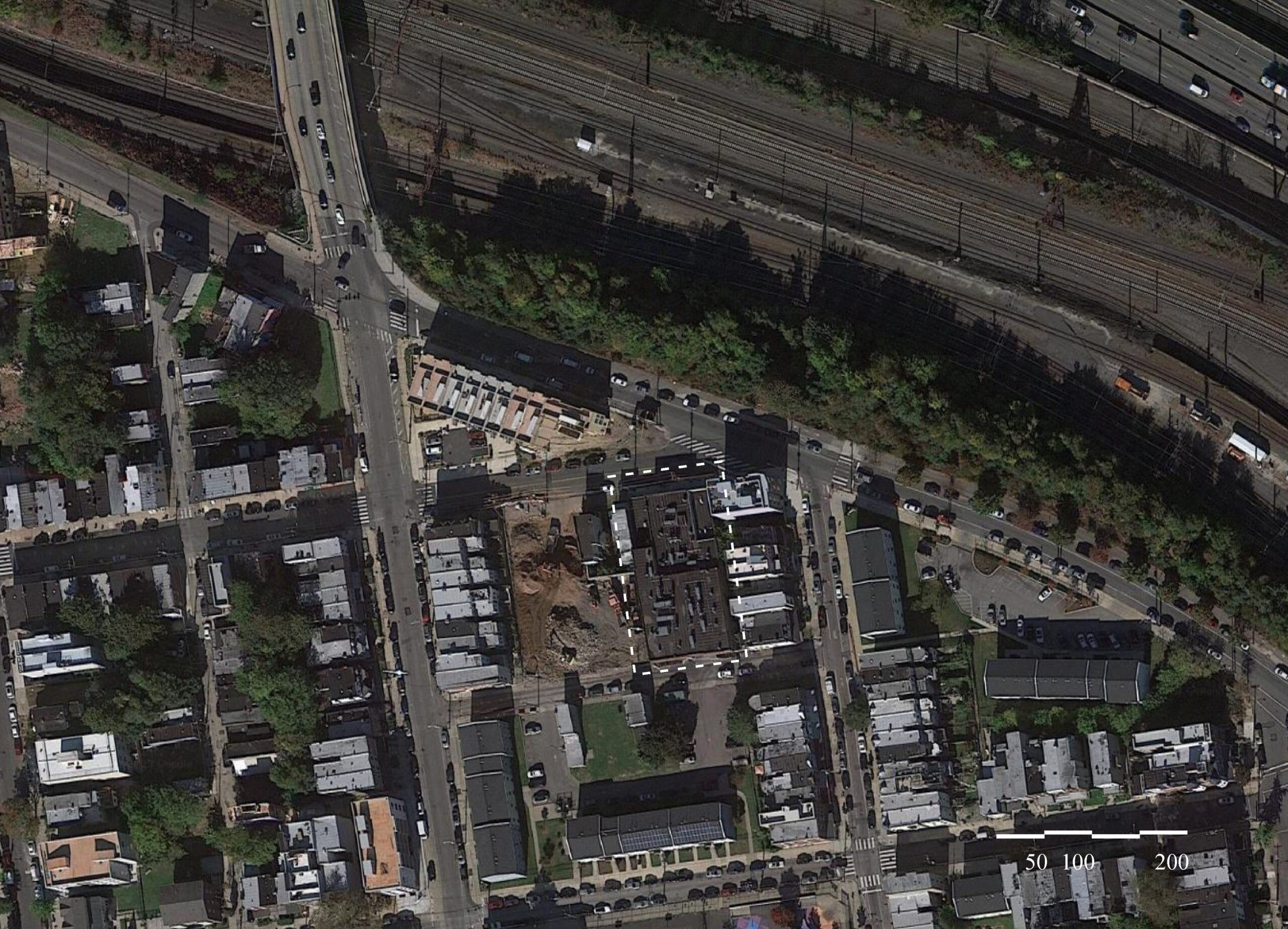
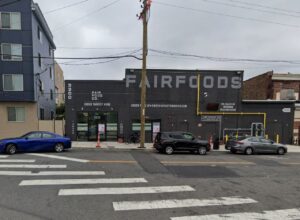
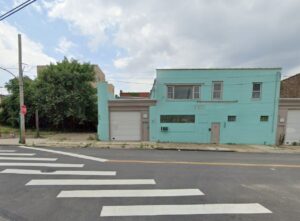
In tandem with the rising popularity of delivery apps, ghost kitchens have been a growing phenomenon in dense metropolitan centers. In 2018 London, “Deliveroo” used the name recognition of chefs in the city to advertise food that was actually cooked in cramped, windowless, unventilated shipping containers outfitted with industrial kitchen equipment, under motorway intersections miles out from the city center. Now, ghost kitchens have been a popular investment for business owners who previously owned restaurants or food carts before 2020. The lowered overhead of a remote kitchen without table service is appealing to a range of business owners, including established restaurants, mom and pop owners unable to meet rising rents, or small operations run out of private homes or roadside stands. In many cases, however, these delivery service apps and the physical space occupied by the ghost kitchens themselves put more money in the hands of parent tech companies, rather than towards individual cooks. Service and delivery fees to the consumer and a higher commission charged to restaurants cut profits that the restaurant would otherwise see. Alienation between cook and consumer increases in this gig-economy model, as does alienation between workers themselves. Per Jonathan Nunn’s 2021 piece on the economics of food delivery,
“Unlike traditional labor models, in which employees’ interests are roughly aligned, the gig economy pits workers against each other. Riders are generally too busy getting their jobs done to converse. There are few opportunities to build up the kind of solidarity that underpins collective bargaining. In this fragmented workplace, couriers are kept constantly busy under the panoptic gaze of the apps.”
The tech companies profit off individual food businesses, paying customers, and the gig-economy workers fulfilling these deliveries. Both the Mantua West Philly and South LA sites that I came across are owned by former Uber CEO, ousted for the company’s unethical practices, Travis Kalanick, now CEO of Cloud Kitchens. Many of the orders delivered out of Cloud Kitchen locations are fulfilled by UberEats.
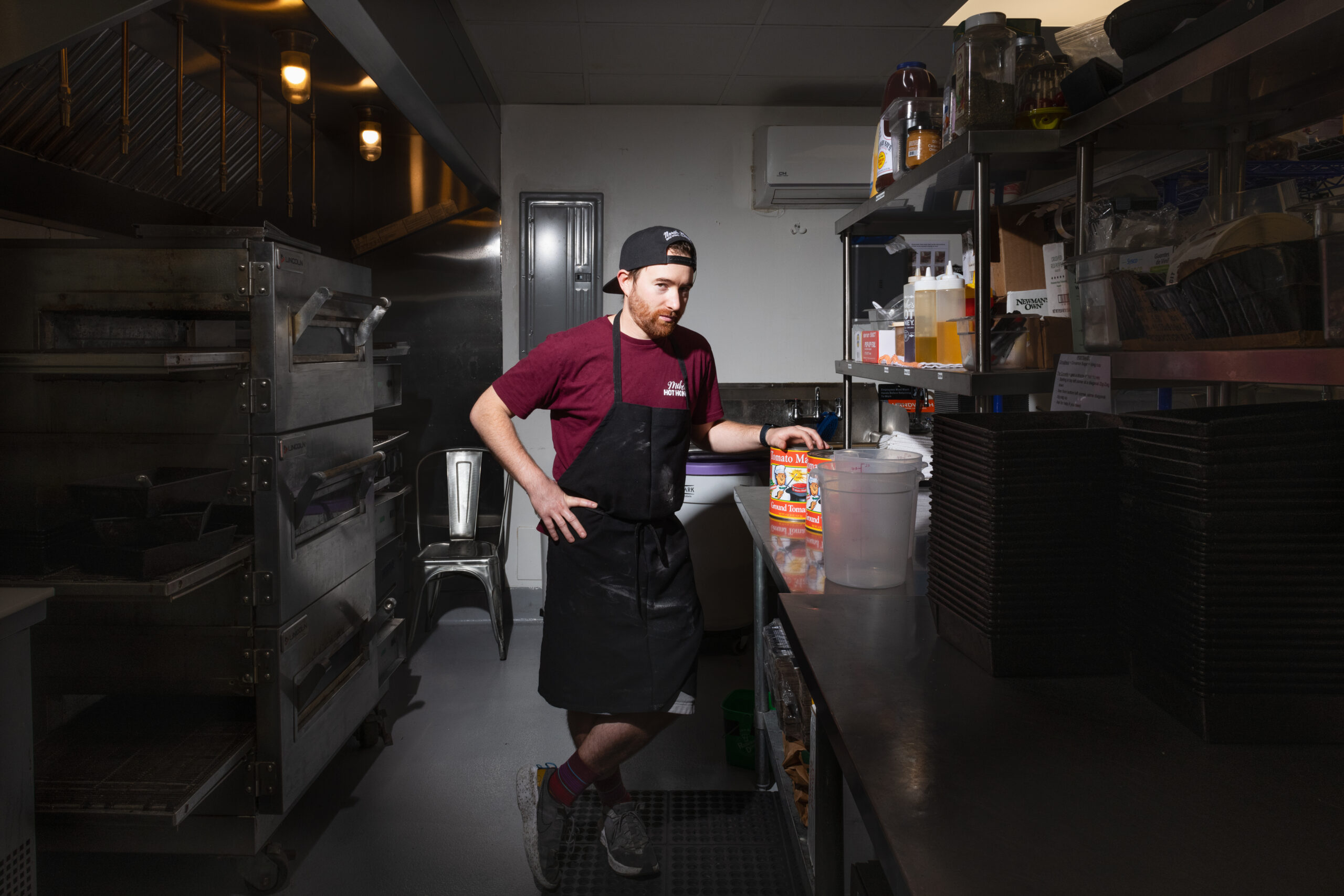
When I had stopped in at the Fair Foods building in Mantua, I tracked down a building manager who refused to disclose any information. I asked directly if he lived in the neighborhood, hoping to disarm him after he had reluctantly mentioned ‘Cloud Kitchens’ by name. “No,” he scoffed. When I asked if the company was specifically seeking to employ folks from the neighborhood where they’ve located their operation, he told me dismissively, “No, we hire just like any other restaurant in a city.” He went on to explain, condescendingly, that people do not have to work in the same neighborhoods where they live. He completely misses my point, which is more concerned with what is owed to locality. What is the impact of serving prepared meals primarily to a student population at the nearby Penn and Drexel University campuses, at the expense of longtime neighborhood residents who are being pushed out by those very same residential populations? Student housing is commonly a gentrifying force fueled by developer interest, and providing services in the neighborhood that cater to students compounds this. The lack of place-based investment in the neighborhood is evident, and the building manager is stubbornly oblivious to the fact that this delivery operation disrupts the current balance of how communities in the area provide for and sustain themselves.
The “urbanization of Amazon-style logistics and the platformization of urban space” is how professor of technology Aaron Shapiro characterizes this spatial shift caused by the proliferation of ghost kitchens. Our cities are increasingly structured by internet delivery services like Amazon-owned Whole Foods grocery delivery, and all the parent tech companies that house meal-delivery platforms. New construction of nondescript warehouses, distribution centers, and logistics facilities ramps up to meet consumer demand for convenience and same-day deliveries. Shapiro notes that “going dark,” as he refers to this sacrifice of consumer-facing real estate,
“threatens the publicness of urban markets as infrastructure for the provision of basic resources…If the “shop front” can now be relegated to online platforms, then brick-and-mortar properties can be converted for back-of-house operations, the spaces optimized for picking, preparing, and fulfilling delivery orders.”

Rather than investing in more grocery stores and corner markets, it has become profitable for internet-based companies to locate warehouses and ghost kitchens in “historically disenfranchised urban communities.” Thus, these areas of the city are effectively “platformized.” The real estate values or rent costs are appealing to companies selling goods or services online, and consequently, much of the construction of ghost kitchens has been in majority Black neighborhoods. These areas are shaped by histories of redlining and predatory lending practices, adjacent to freeways or other pollutants, and oftentimes close to college campuses whose student populations play a heavy hand in rapidly gentrifying the adjacent neighborhoods, as is the case at both the Mantua and South LA sites.
But there is no singular moralizing argument to be made about ghost kitchens and their proliferation. While the relentless push for optimization and efficiency is no doubt a function of late capitalist alienation, both from each other and from the products of our labor, even folks outside of the food industry have known for years that restaurant costs are untenable for owners and restaurant work is exploitative to cooks and waitstaff. The reduced overhead costs of renting and operating a ghost kitchen, as opposed to a traditional brick-and-mortar location, has allowed small food vending operations to be housed, some of whom previously sold on the street, out of trucks, or out of their private homes. La Cocina in San Francisco, Hot Bread Kitchen in New York, and Our Time in Baltimore are shared commercial kitchen spaces focused on supporting “women of color starting culinary ventures,” citing “high overhead costs, convoluted permitting requirements, and difficulty securing loans” as common challenges for these entrepreneurs. Many cooks at ghost kitchen locations face systemic barriers to entry, and having a small brick-and-mortar space without table service allows them to be housed affordably.
One owner-operator and cook at the South LA site just moved to LA from Philadelphia in May of last year, having toured the kitchen space and signed a lease in March, launching their business in September. Two line cooks in another kitchen down the driveway share that they grew up in the Boyle Heights and West Adams neighborhoods of LA. Another cook has been at this location for about a year. Born in Fontana, in the IE, they used to live in this neighborhood but now live in Long Beach, and shoulder a substantial commute up to the ghost kitchen site on an almost-daily basis. That these details in the lives of cooks operating ghost kitchens are not part and parcel of the experience for consumers ordering meals prepared by them is part of the “engineering of obscurity” of platform logistics. The ghost kitchen further separates producer from consumer, invisibilizing the labor of cooking, concealing the personalities and personal histories of cooks from customers, where “urban space is reconfigured not for consumption but as a “raw material” from which future logistical value can be extracted.”
This treatment of physical space in the city as a resource rather than as a public realm, a place of value worthy of designs for everyday interaction, results from “short-term fixes and logistical hacks” that might allow small businesses and individual cooks to survive, but lead us towards a convenience culture that is not universally accessible. Without markets and restaurants as physical spaces, according to scholar Lizzie Richardson, “social interactions and economic dramas” that are “no less integral to commodity exchange than the price and quality of goods” are lost, thereby reconfiguring accessibility. In the case of ghost kitchens, only consumers who can afford to pay for pre-prepared meals, plus the additional fees and services for takeaway delivery services, are the beneficiaries of the proliferation of ghost kitchens. These consumer populations, in the case of Mantua’s Fair Foods building and South LA’s Grand Food Depot these are largely the student populations of Drexel, Penn, and University of Southern California, continue to gentrify historically disenfranchised urban communities and push out longtime residents.
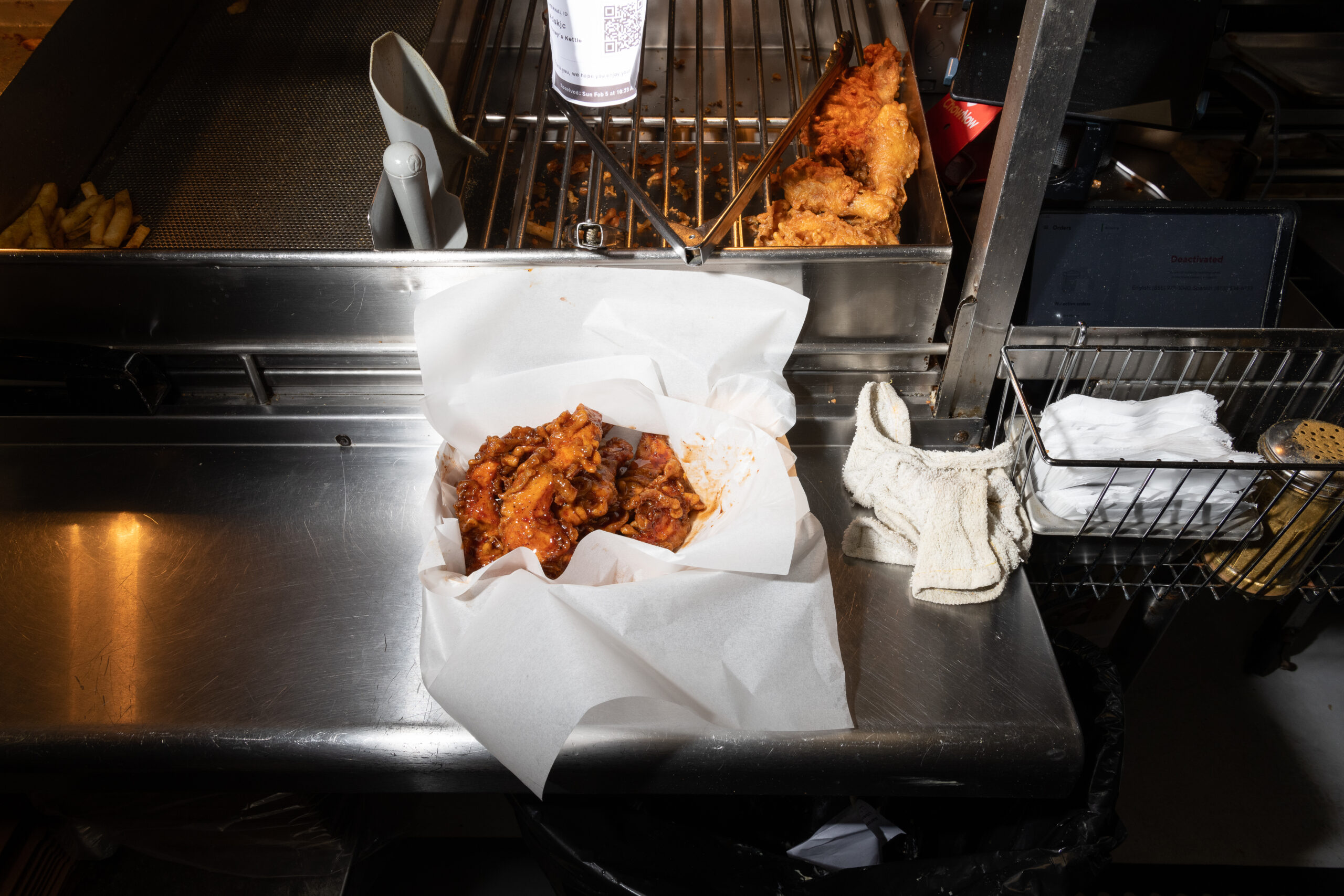
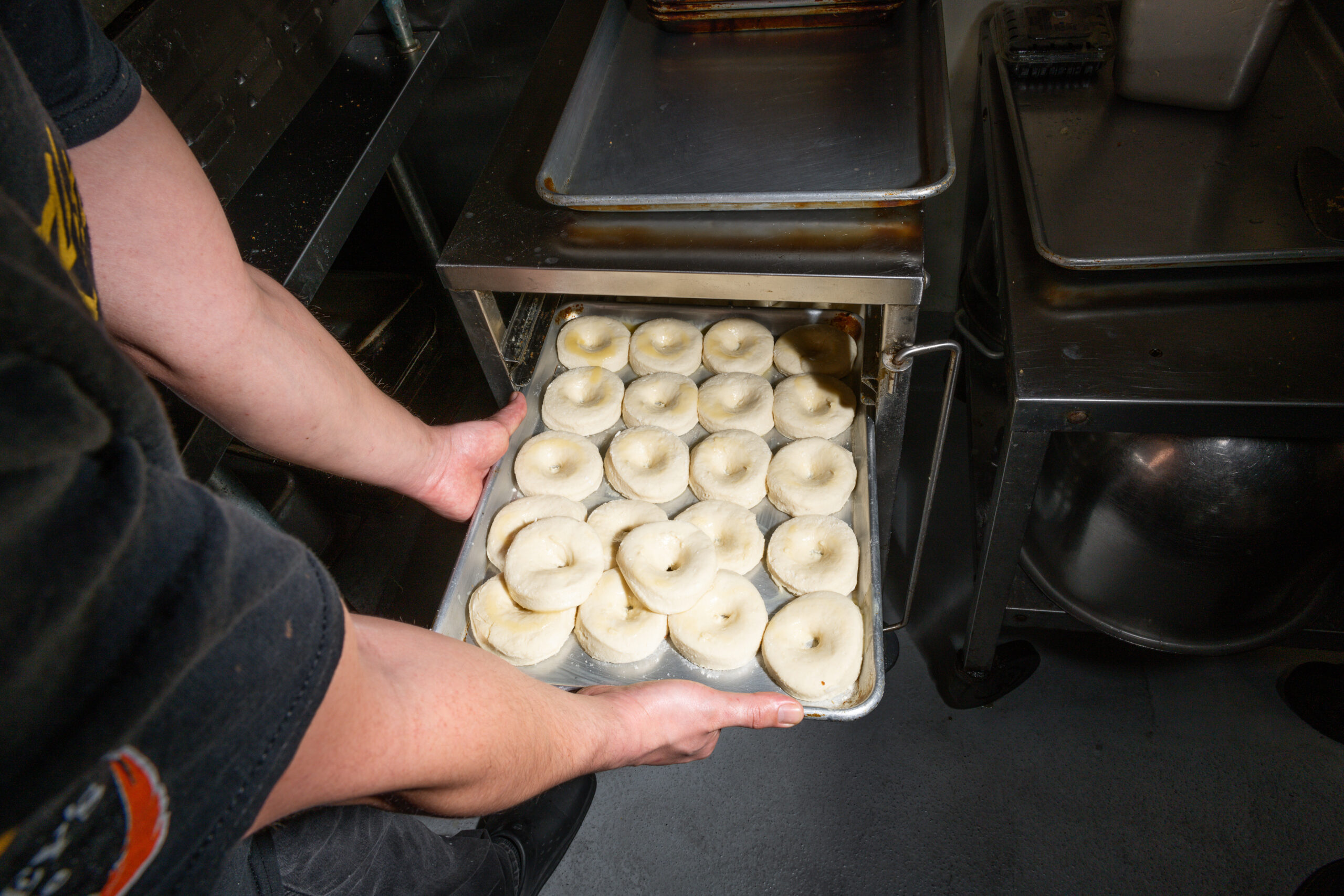
In part, it is the tactility and textural specificity of being in a given space that we give up when favoring ghost kitchens or meal delivery services from the privacy of homes that we own or apartments we rent. Conversely, the consistent gathering in space becomes place. The charm of a local corner store, coffeeshop, neighborhood cafe, or other third space in the city allows us to meet our neighbors and start to recognize faces, to notice who pays with cash or card, who rolls up on a bike, who stays in the driver seat while their friend dashes in to place the order. The ghost kitchen has intensified estrangement and alienation in the city. Individual consumer choice won’t solve the large-scale, societal problems of our food systems, but we can still choose the manner by which we interact with the urban environment as it exists for us today. Like the drivers in their cars waiting on order pickup and customer delivery instruction, we all participate in systems that seem inescapable to us or necessary for our survival. But we also all have agency to reclaim our interactions in meatspace, and place value, time, energy, and attention towards ambient interaction in the street and with strangers, contextualizing our understanding of ourselves within our local neighborhoods, challenging our self-conception, and being in relation with the people and spaces in our locality.
Returning one year later to the South LA site, Jackfruit cafe has “temporarily closed.” A new cohort of small-scale food service operations have moved into the Cloud Kitchens-owned location. There still isn’t any appropriate place to sit or walk, or even to linger, at the ghost kitchen site. Like many places in LA, it is presumed that you will sit in your car. I sit on the sidewalk curb like I do when eating at Avenue 26 in Lincoln Heights, or like we do when gathering on trapezoidal parking curbs in the strip mall parking lot at Jim’s Bakery in the SGV for bao, sweet taro pastry, and egg tarts. I wait for the time printed on the receipt and walk down the aisle of grey-washed stone for takeout and a sidelong glance or a wave to all the cooks I pass by.
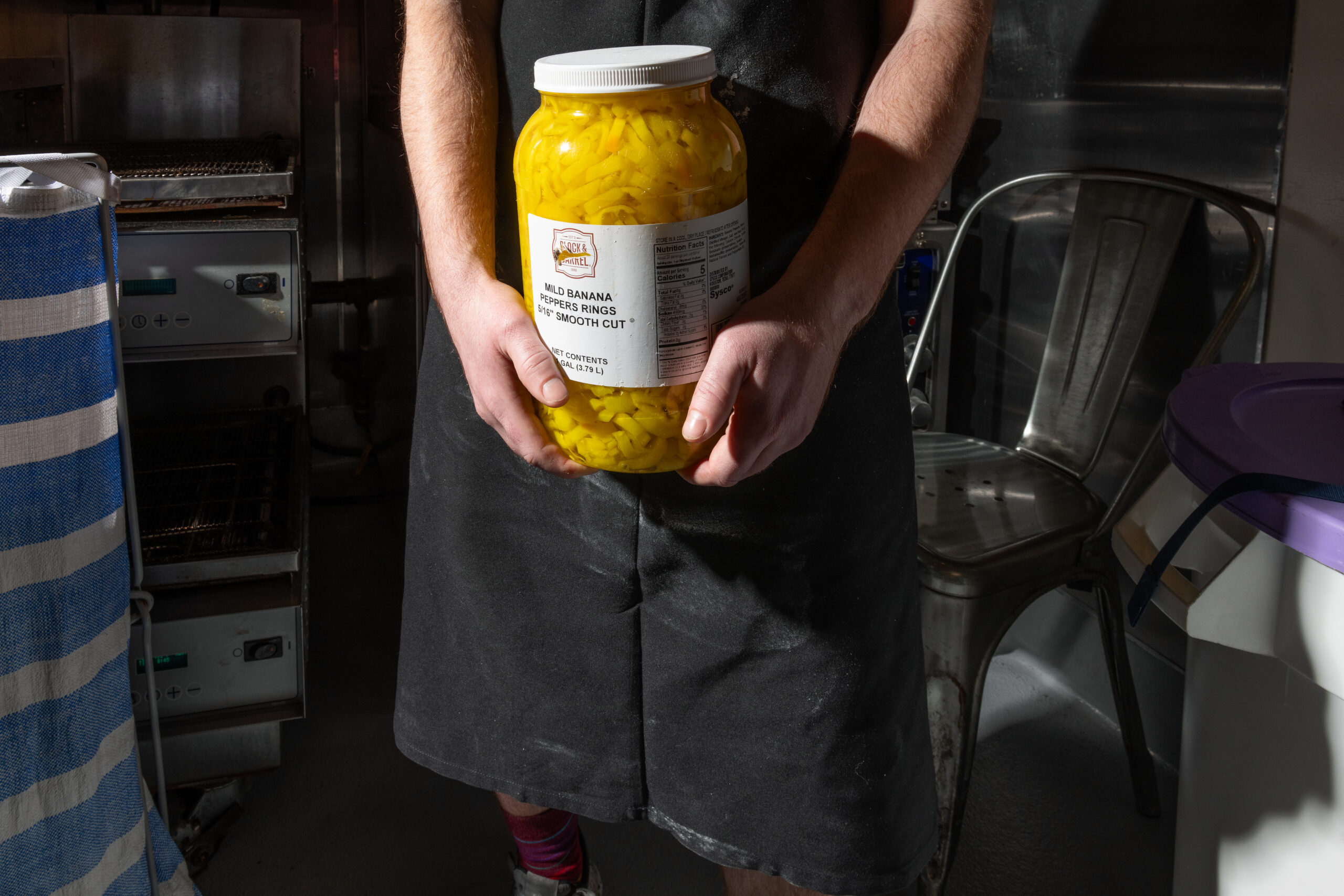
Works Cited
Brones, Anna. “Karen Washington: It’s Not a Food Desert, It’s Food Apartheid: The community activist pushes the food justice movement beyond raised beds, food pantries, new supermarkets, and white leadership.” Guernica Magazine. 7 May 2018. https://guernicamag.com/karen-washington-its-not-a-food-desert-its-food-apartheid/
Matheson, Kathryn. “Mantua: “Promising” a Supermarket in Mantua.” Philadelphia Neighborhoods: Reporting in Underserved Communities. 2 April 2014. https://philadelphianeighborhoods.com/2014/04/02/mantua-promising-a-supermarket-in-mantua/
Klein, Michael. “Philly restaurant owners are scaring up delivery business during the pandemic with ‘ghost kitchens’: ghost kitchens boost the Philadelphia restaurant delivery scene during the coronavirus pandemic.” 5 December 2020. https://www.inquirer.com/food/ghost-kitchens-philadelphia-restaurant-owners-pandemic-delivery-20201205.html
Campbell, Courtney. “Food delivery services you can use during coronavirus pandemic.” USA Today. 23 March 2020. https://www.usatoday.com/story/tech/reviewedcom/2020/03/23/food-delivery-services-use-during-coronavirus-pandemic-grubhub-doordash-uber-eats/111456616
Philadelphia Wholesale Produce Market. https://phillyfreshproduce.com/our-story/
Ortigosa, Nuria and David Steegmann. “Interview with Carolyn Steel.” Quaderns n.271: About Buildings and Food. Collegi D’Arquitectes de Catalunya COAC, Xavier Monteys. Autumn 2018. Print.
Wiener, Anna. “Our Ghost Kitchen Future.” The New Yorker. 30 September 2021. https://www.newyorker.com/news/letter-from-silicon-valley/our-ghost-kitchen-future
Nunn, Jonathan. “Gulp! The secret economics of food delivery: How DoorDash and Deliveroo are changing the way we eat.” 26 January 2021. 1843 Magazine The Economist. https://www.economist.com/1843/2021/01/26/gulp-the-secret-economics-of-food-delivery
Shapiro A. Platform urbanism in a pandemic: Dark stores, ghost kitchens, and the logistical-urban frontier. Journal of Consumer Culture. 2022 Feb 1:14695405211069983. doi: 10.1177/14695405211069983. PMCID: PMC8808137.
Yeager, Amanda. “With ‘Our Time’ incubator, two Baltimore chefs look to support women of color starting culinary ventures”. 2 February 2021. Baltimore Business Journal. https://www.bizjournals.com/baltimore/news/2021/02/02/our-time-culinary-incubator-women-of-color.html
Mezzadra S, Neilson B. “On the multiple frontiers of extraction: excavating contemporary capitalism.” 2017. Cultural Studies 31(2–3): 185–204.
Richardson, Lizzie. Platforms and the Publicness of Urban Markets. 2018. New York, NY: Mediapolis. Available at: https://www.mediapolisjournal.com/2018/10/platforms-and-the-publicness-of-urban-markets/

